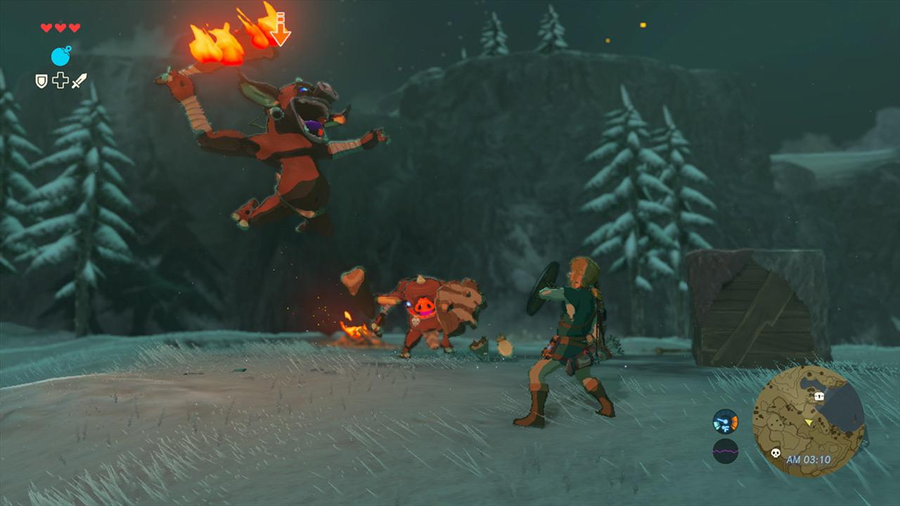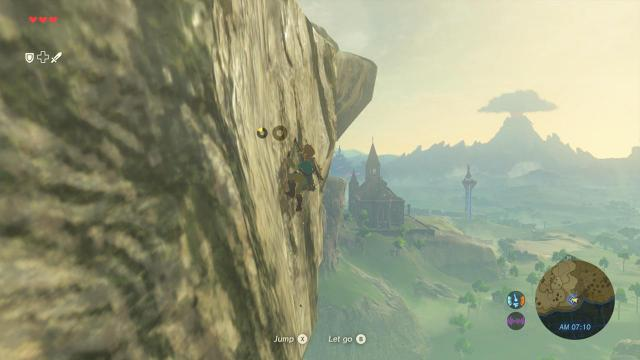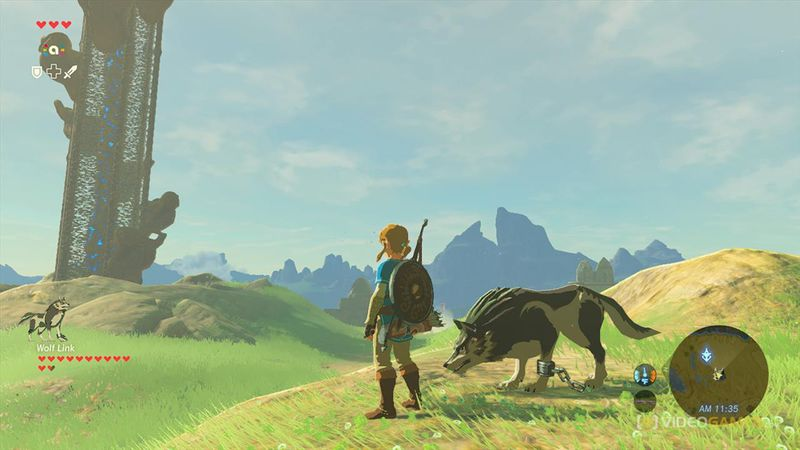We played The Legend of Zelda: Breath of the Wild. Here's what you need to know
Utterly wild

The Legend of Zelda series has a funny relationship with freedom.
The first game - that dusty old golden NES cartridge - dropped you into a sprawling fantasy world and said "Go". Where you went and what you did was up to you: you could even forget to pick up your sword if you weren't paying attention.
But as the series has gone on, the games have become more and more linear. The world got cut up into easily digestible chunks. Dungeons could no longer be finished out of order. And huge bits of the game would become cut off until you reached a certain part of the plot.
3DS game A Link Between Worlds was a step in the right direction. You now had control over which dungeons you wanted to tackle, and key items were rented from a shop rather than found in a gilded treasure chest.
But The Legend of Zelda: Breath of the Wild - out in March for Wii U and Nintendo NX - takes it all the way.
The game takes place in a monstrously big Hyrule that you are free to roam - more or less - however you want. The world is littered with things to do - like mini dungeons that contain handy items, secretive chests with useful gear, and moblin camps you can fight.

These moblin fights are actually quite terrific, and thanks to some quirky AI, the battles in Breath of the Wild can be turned in your favour, if you're smart.
You can use stealth to sneak through long grass, hop up a tree, and topple a moblin on a lookout tower so it can't sound it's trumpet and alert other enemies to your presence. Then, perhaps you could pinch the moblin's weapons while they're relaxing by the camp fire so they have nothing to fight you with when you attack.
That might be easier at night, when the moblins are sleeping. Or when a boar runs through, and the enemies are too busy trying to chase down their dinner. You could also chop down a tree and make it land on an enemy's head or set fire to the grass and let it spread to steal away their cover.
The combat is slightly different from classic Zelda. You still have z-targeting and all that, but a new parry move lets you counter an enemy's attack if you have good timing. The optional motion controls for aiming your bow also makes it effortless to fire off a few arrows during combat.
Clearing out a moblin camp will usually earn you a treasure chest which could contain anything from a few arrows to a fire rod. Something that Zelda once saw as a rarified item, hidden deep within the bowels of a dungeon, is now just one of many weapons Link can find in the world.

Those weapons have durability and can break, so you'll need to constantly by hunting for new kit. You'll also want to look for health: those little hearts are no where to be seen. Instead, you find or hunt for food and then chow down when your health is low. Food can be cooked to make it more nutritious.
This might make Zelda sound more like Minecraft or one of those Steam survival games than the adventures we're used to. And it is a big change for the series. But it provides another good reason to explore and engage with the world. You won't go far without health so maybe you should take a detour to take out that moblin camp and steal the meat from their campfire.
Nintendo says that the entire game can be played vegan, by the way.
Other things you might want to look for in the open world are shrines. There are about 100 of these on the map and they're like mini dungeons (sadly, the demo area doesn't contain an actual dungeon) with quick puzzles to overcome. Your reward is usually quite sweet.
In one, you get a stasis power that can make an object pause in time so you can solve puzzles. Another gives you the power of magnets. One more lets you drop remotely detonated bombs. If this sort of stuff is found in mini dungeons, who knows what's hiding in the main ones.

Breath of the Wild feels very different from the last console Zelda game: Skyward Sword. But it does keep one contentious feature: a stamina meter. Running and climbing depletes a small green circle and if you run out you'll either slow to a crawl or fall off the wall.
It works well for climbing. You can scale pretty much anything in this game and if you want to climb a really big mountain you'll either need to scope out spots to rest mid-way up, or craft some kind of meal that will boost your stamina. For running, though, it's a bit less fun to constantly have to stop sprinting every five seconds to let the meter cool.
Luckily, you'll spend most of your time surfing on your shield when exploring. You can also fast travel if you want to ruin everything. Nah, don't do that - just open up your map on Link's Shiekah Slate iPad, plop down a way point, and then start walking. You can also plop stamps on the map to remind yourself about moblin camps, or puzzles you can't yet solve.

This game is, basically, jam packed with stuff. I haven't even mentioned the way you must wear warm clothes to survive in the frigid tundras of Hyrule, or the fact that the Temple of Time is in ruins, or how boss monsters can be found in the overworld.
And there's so much to talk about how the world is organic and interconnected. How you can chop down a tree, pick up the apples, then put a piece of flint in the grass and strike it with your sword to set the grass alight, then light a torch in the flames, then light a campfire, then cook the apple. Then take the cooking pot lid for a shield.
This game is like, what a video game sounds like when described by a child. Endless possibilities, everything responds to you, and - crucially - you can go anywhere and do anything.
We'll have to wait for the game's launch next year to see just how free you feel (the demo consists of just 2% of the overal world), but from this brief demo it feels like Zelda is returning to its roots. And, in my opinion, that's a very good thing.
